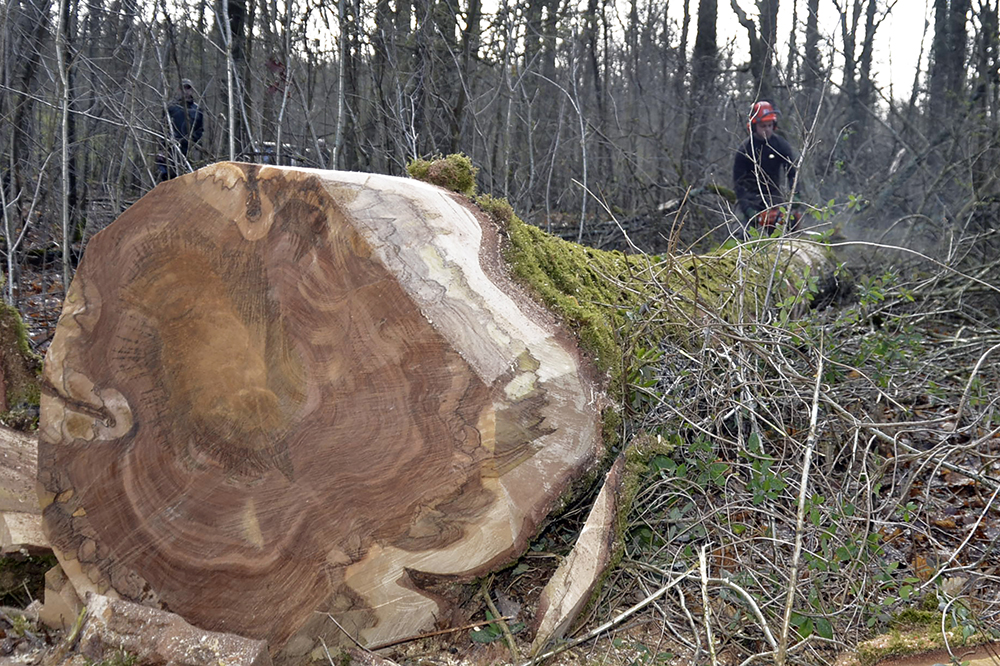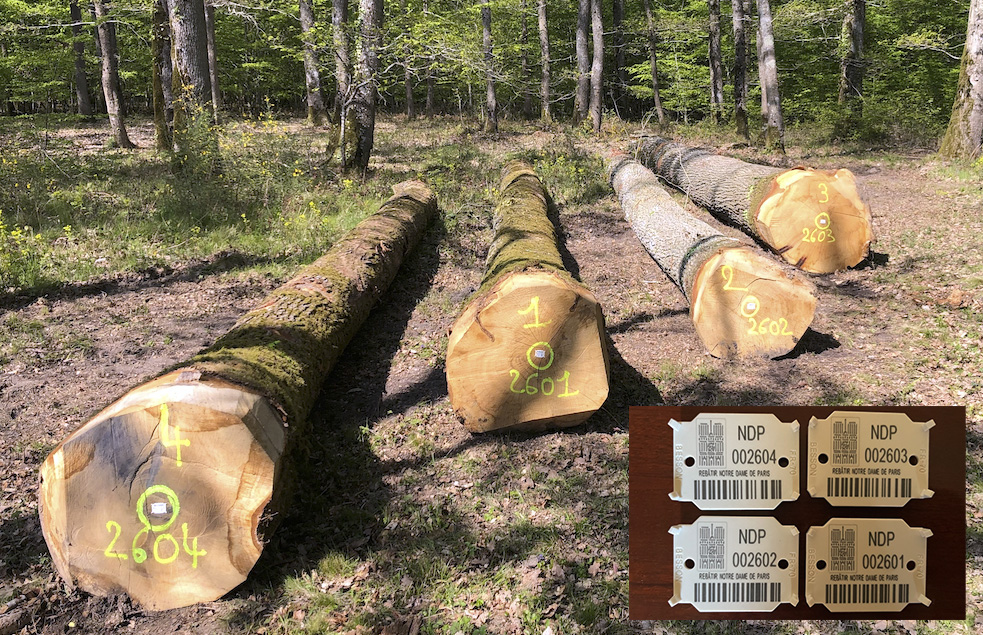2021- Four Oaks for the Spire of Notre-Dame de Paris
Patricia Husson proposed four large oak trees from the forests of Preuilly for the restoration of Notre-Dame de Paris. They were accepted and registered in the national database created to manage the material needs of the Notre-Dame reconstruction project.
Everything then moved very quickly. The trees had to be felled “during the waning moon” before the spring sap rise. The oaks were cut down on Friday, March 12, 2021, in the Bois de Crèvecœur, just a stone’s throw from the abbey.

How Were the Trees Selected, and What Will They Be Used For?
The decision to restore the spire and the framework of the cathedral as it was formely made in July 2020. The interprofessional organization France-Bois-Forêt was chosen to coordinate the sourcing, selection, and felling of the timber needed for the project, working in collaboration with the National Forestry Office and the architects and experts in charge of the restoration.
The “harvest”—as foresters call it—was planned in two phases :The first batch has just been collected for the spire, the second batch will be taken in autumn, destined for the medieval framework, also known as the “forest of Notre-Dame.”
This first selection was highly demanding : Trunks of 50, 60, 80, or even 90 cm in diameter, lengths ranging from 8 to 14 meters, in other words trees over 100 years old, some reaching 200 years.
The 1,000 oak trees ordered in January by the architects in charge of the cathedral’s restoration will be used to rebuild the most recent part of Notre-Dame, designed and constructed by Eugène Viollet-le-Duc in the 19th century: the spire, its base, the framework of the transept.

“These massive pieces will form the lower bracing, also called the ‘tabouret’ of the spire. They will connect the four crossing pillars diagonally, and this diagonal will support the central post of the spire, which will rise to 96 meters. These trees are the ones that will bear the entire framework of the spire,” explains Philippe Villeneuve, Chief Architect of Historic Monuments and director of the restoration project.
The oak trees selected come from all regions of France, with half sourced from private forests. Importantly, the trees are donated by their owners, and the sawmilling is also provided free of charge by the timber industry.
These first 1,000 oaks will be left outdoors for the “weathering” phase. This process allows the wood to naturally cleanse itself under the effects of rain, wind, and sun, which evaporate the free water contained in the wood fibers as an initial drying step. The logs will then be transported for a second drying phase and cutting in a sawmill before finally reaching the workshops of the master carpenters restoring Notre-Dame, in 2023.
March 2021